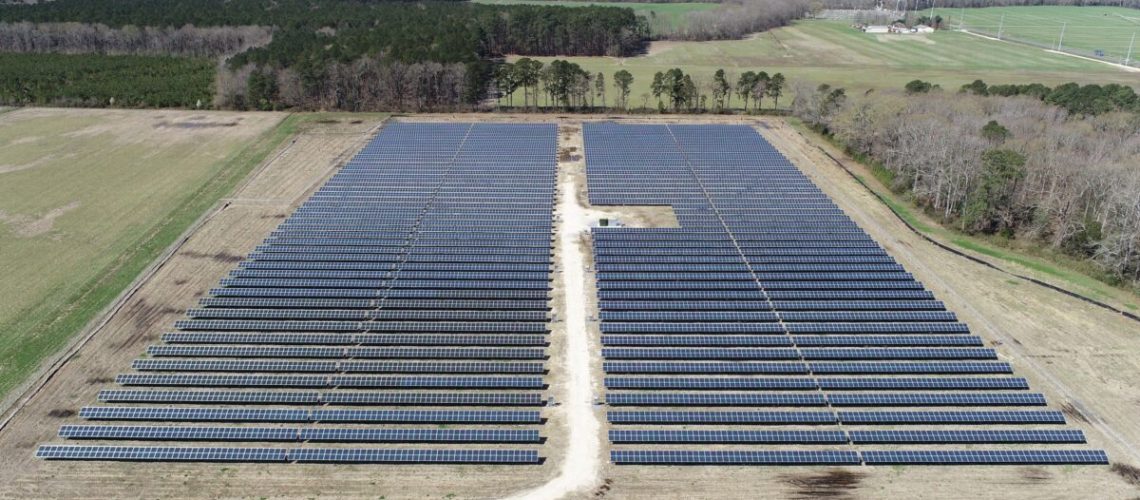Maryland’s new community solar program provides a blueprint that other states can follow, helping to increase use of locally generated energy and offering numerous benefits to communities.
Maryland has a history of supporting solar and has set an ambitious goal of 100% renewable energy generation by 2035. Now the state is on track to expand a burgeoning solar market segment, community solar. Maryland’s new community solar bill provides an excellent opportunity to accelerate the state’s shift to renewable energy. Building on its 2015 Community Solar Pilot Program, House Bill 908 makes much-needed improvements to that program and makes the program permanent. This bill will allow Maryland to join the ranks of the 22 other states that have implemented community solar programs, offering access to solar power for both residents and businesses statewide.
The pilot program proved effective in kick-starting community solar initiatives in Maryland, and it is anticipated that it will provide energy to approximately 90,000 customers in the state before its expiration at the end of this year. The pilot also provided a valuable learning opportunity that has informed development of the new program.
Based on lessons learned during the pilot as well best practices employed by programs across the United States, the permanent program incorporates several upgrades that are formulated to revitalize Maryland’s community solar market. To avoid delays in permitting and getting projects built, the program calls for greater coordination between the Public Service Commission (PSC), utilities and the authorities having jurisdiction (AHJ) responsible for project queues. The program is expected to be more inclusive and less limiting than the pilot, ensuring that solar access is more equitable. Furthermore, establishing a permanent program will provide the essential policy certainty required for any solar initiative to thrive.
The new program will allow for broader participation by all customers, including low- to moderate-income (LMI) households. It will require community solar projects to dedicate 40% of their solar generation to LMI subscribers. To make this goal more achievable, the program allows LMI customers to provide self-attestation of their LMI status, making it easier for them to sign up for community solar projects. The program also introduces consolidated billing, simplifying participation in the program and lowering the entry barrier by allowing customers to get just one electricity bill.
In addition to helping customers, consolidated billing and self-attestation for LMI will simplify the process for owners of community solar gardens to gain subscribers.
The program also makes significant improvements in project requirements. There is now additional system size capacity allowed on rooftops, parking canopies, parking structures, industrial areas, brownfield sites and on or over transportation or public rights of way. Also included are clean fill sites — land previously zoned for industrial use or was ecologically compromised, provided the site is not targeted for mitigation or restoration. Agrivoltaics projects, which combine farming with solar panels, will now be authorized to utilize co-location on farms, facilitating greater economies of scale for developers.
The new program will also eliminate the restrictive programmatic structure within the pilot and remove project categories, project-generating capacity limits, yearly programmatic and utility-specific capacity limits and sunset dates. Whereas the pilot had an overall cap of 580 MW, the new program’s total capacity is subject only to the state’s overall net metering capacity limit, allowing developers like Standard Solar to bolster community solar development within Maryland.
The bill is particularly significant for Standard Solar, as our company’s presence continues to expand in our home state of Maryland, contributing to delivering affordable, reliable, clean energy to Marylanders.
But the bill’s significance could — and should — go beyond Maryland. Community solar is an important market segment because it increases access to solar with locally generated energy, offering numerous benefits to communities. Combining the best elements of successful programs around the country, Maryland’s new community solar program provides a blueprint that other states can follow. As more states see the value of community solar and enact their own programs, having an example of a robust program will make them more likely to succeed in supporting this crucial market.
Given the pressing need to move away from fossil fuels and the numerous incentives for clean energy provided by the Inflation Reduction Act, there is no better time than now for all states to establish programs like Maryland’s.
Trevor Laughlin is policy and regulatory affairs analyst with Standard Solar.



